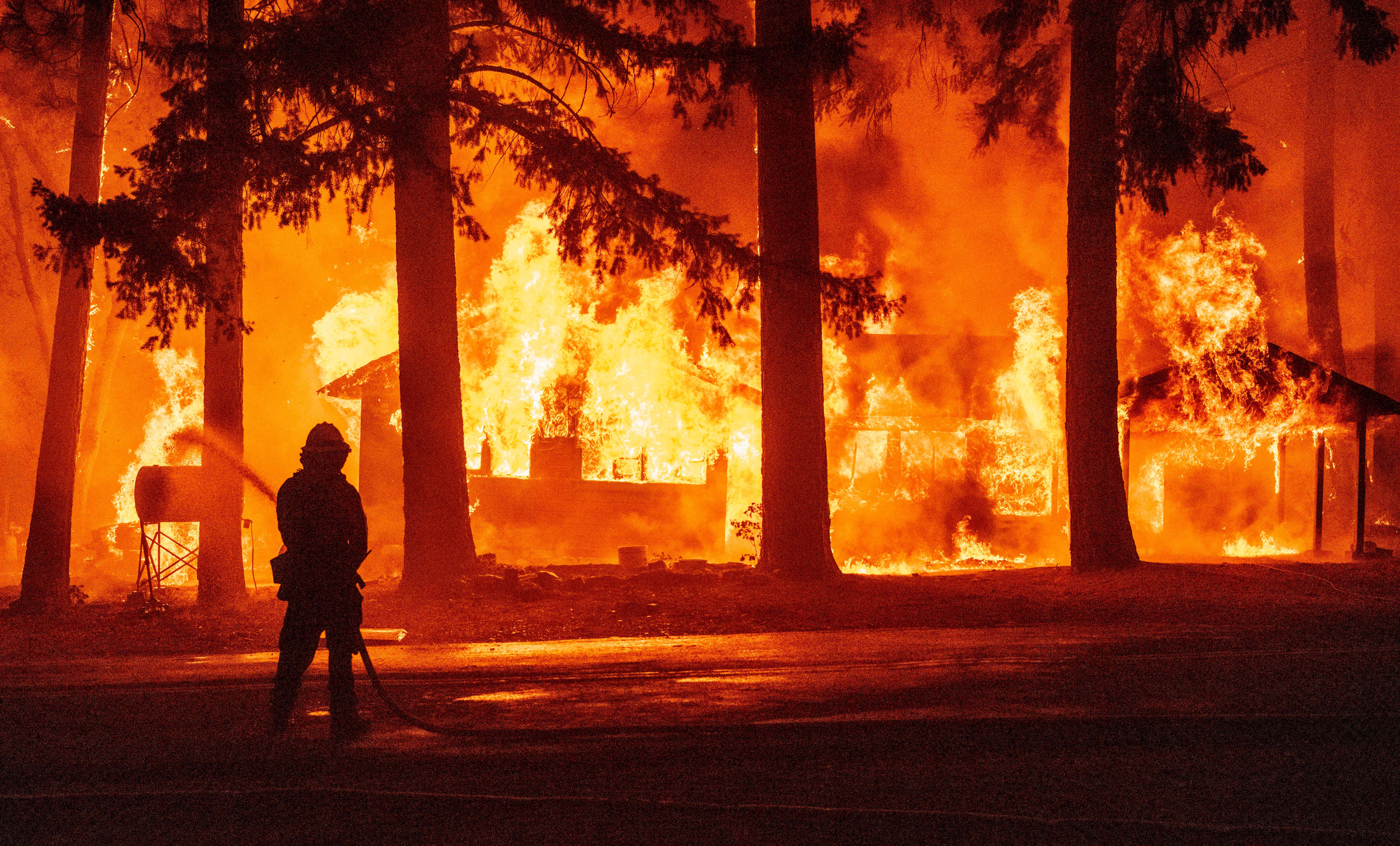Global CO2 emissions from wildfires reached record highs this summer, satellite data shows
Blistering heat fanned flames of severe blazes from Mediterranean to North America in July and August
Your support helps us to tell the story
From reproductive rights to climate change to Big Tech, The Independent is on the ground when the story is developing. Whether it's investigating the financials of Elon Musk's pro-Trump PAC or producing our latest documentary, 'The A Word', which shines a light on the American women fighting for reproductive rights, we know how important it is to parse out the facts from the messaging.
At such a critical moment in US history, we need reporters on the ground. Your donation allows us to keep sending journalists to speak to both sides of the story.
The Independent is trusted by Americans across the entire political spectrum. And unlike many other quality news outlets, we choose not to lock Americans out of our reporting and analysis with paywalls. We believe quality journalism should be available to everyone, paid for by those who can afford it.
Your support makes all the difference.Global CO2 emissions from wildfires reached record highs this summer, satellite data shows.
Blistering heat fanned the flames of severe wildfires from the Mediterranean to North America in July and August.
Both were record months for wildfire emissions globally, according to new data from the Copernicus Atmosphere Monitoring Service.
Wildfires released 1.26bn tonnes of CO2 in July, according to the data, with more than half of these emissions attributed to fires in North America and Siberia. In August, fires caused 1.38bn tonnes of CO2 to be released.
Across the world, most fires are started by humans. However, the climate crisis is making “fire weather” – hot, dry and windy conditions – more likely to occur, according to a recent assessment from some of the world’s leading climate scientists.
And, as forests and plants burn, they release the carbon stored within their leaves, roots and trunks – contributing to the build up of greenhouse gases in the atmosphere.
Dr Mark Parrington, a senior scientist and wildfire expert at the Copernicus Atmosphere Monitoring Service, told The Independent: “Since mid to late June, we’ve seen – particularly in the Sakah Republic area of Russia – really large areas of fires that burnt persistently through July into August.
“For North America, we saw fires in British Columbia in June, which were then joined in July by really persistent fires in Oregon, Idaho, Washington and California.
“One of the common things between these fires, and the ones in the Mediterranean, is that they all occur where the land is drier and surface air temperatures are warmer. There seems to be a clear link showing that when it’s drier and hotter, that’s where these fires occur more.”
This summer saw the Mediterranean become a “wildfire hotspot” as countries including Turkey, Greece, Italy, Algeria and Tunisia were gripped by a brutal heatwave, the service said.
At least 90 people were killed by the blazes in Algeria, including 33 military officers who battled to put out the fires with limited resources. Early reports suggest this year’s fires caused more damage to Algeria’s forests than all the blazes from 2008 to 2020 combined.

In North America, large-scale wildfires affected thousands of people in western regions in July and August.
California saw its second-largest blaze in history. The Dixie Fire swept across an area twice the size of Los Angeles, destroying 1,000 buildings, including most of the Gold Rush-era town of Greenville and hamlet of Canyondam.
Meanwhile, the Sakha Republic in northeastern Siberia also experienced “unusually” large and persistent fires this summer, the service said. Wildfire emissions across the region were more than twice the previous record for June to August this year, according to the data.
Dr Parrington said it was still too soon to say how the record wildfire emissions will affect the growth of CO2 in the atmosphere and, thus, the pace of global heating.
This is because some of the CO2 released will be reabsorbed by plants as they grow, he explained.
“The really immediate impact of these fires is smoke pollution,” he added. “Populations downwind from the fires in Sakha Republic faced severely degraded air quality for a number of weeks.”

Join our commenting forum
Join thought-provoking conversations, follow other Independent readers and see their replies
Comments